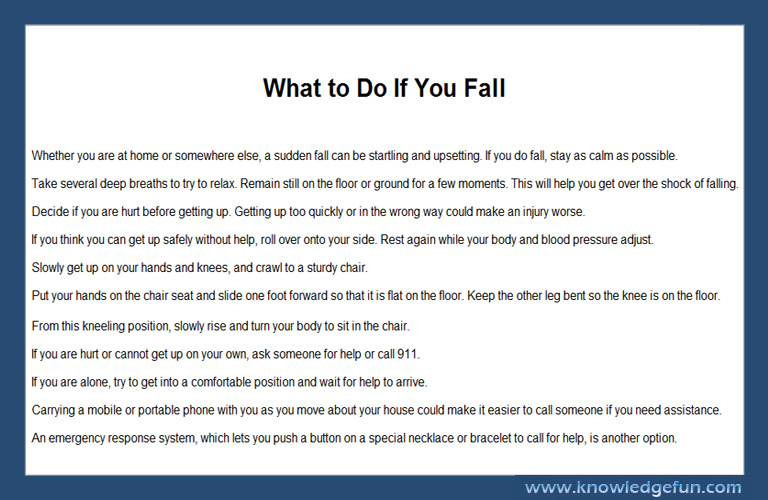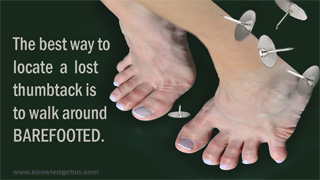Falls
Falls and Older Adults
The risk of falling, and fall-related problems, rises with age. More than one in three people age 65 or older falls each year, but less than half tell their health care providers about it. Even if they are not injured, many people fear falling again and limit their activities. This reduces mobility and physical fitness, and actually increases the risk of another fall.
A great number of older adults go to emergency departments for fall-related injuries each year. Many of us have a relative or friend who has fallen. They may have slipped while walking or felt dizzy and fallen after standing up. Maybe you've fallen yourself. If so, you're not alone.
Among older adults, falls are the leading cause of hip, leg, and arm fractures, head trauma and hospital admissions for trauma, loss of independence, and deaths due to injury. Fractures, especially of the hip, can lead to hospital stays, disability, and loss of independence among older adults. Fortunately, most healthy, independent older adults hospitalized for broken hips can return home or live on their own after treatment and rehabilitation. But many cannot and need long-term care.
Fear of falling becomes more common with age, even among those who haven't fallen. Consequently, older people may avoid walking, shopping, or taking part in social activities. This makes it hard to get around or live independently, and increases the risk of death. If you're worried about falling, talk with your health care provider. Your provider may prescribe physical therapy to help improve your balance and walking — and restore your walking confidence. Getting over your fear can help you to stay active, maintain your physical condition, and avoid future falls.
Fortunately, falls are largely preventable. Older adults can reduce the chance of falls through regular exercise, regular eye tests, removing tripping hazards at home, and identifying medicines that may cause dizziness.
Did You Know?
- Falls by seniors in the home, such as on stairways, are among the most common and dangerous accidents.
- Over 95 percent of hip fractures are due to falls.
- Older women are more than twice as likely to fracture their hips in falls as older men.
- More men are likely to die from falls than women.
- People 75 and older who fall are much more likely to be admitted to long-term care facilities for a year or more.
- Falls by seniors are largely preventable, with the right preparations.

What to Do If You Fall
Whether you are at home or somewhere else, a sudden fall can be startling and upsetting. If you do fall, stay as calm as possible.
Take several deep breaths to try to relax. Remain still on the floor or ground for a few moments. This will help you get over the shock of falling.
Decide if you are hurt before getting up. Getting up too quickly or in the wrong way could make an injury worse.
If you think you can get up safely without help, roll over onto your side. Rest again while your body and blood pressure adjust. Slowly get up on your hands and knees, and crawl to a sturdy chair.
Put your hands on the chair seat and slide one foot forward so that it is flat on the floor. Keep the other leg bent so the knee is on the floor. From this kneeling position, slowly rise and turn your body to sit in the chair.
If you are hurt or cannot get up on your own, ask someone for help or call 911. If you are alone, try to get into a comfortable position and wait for help to arrive.
Carrying a mobile or portable phone with you as you move about your house could make it easier to call someone if you need assistance. An emergency response system, which lets you push a button on a special necklace or bracelet to call for help, is another option.





